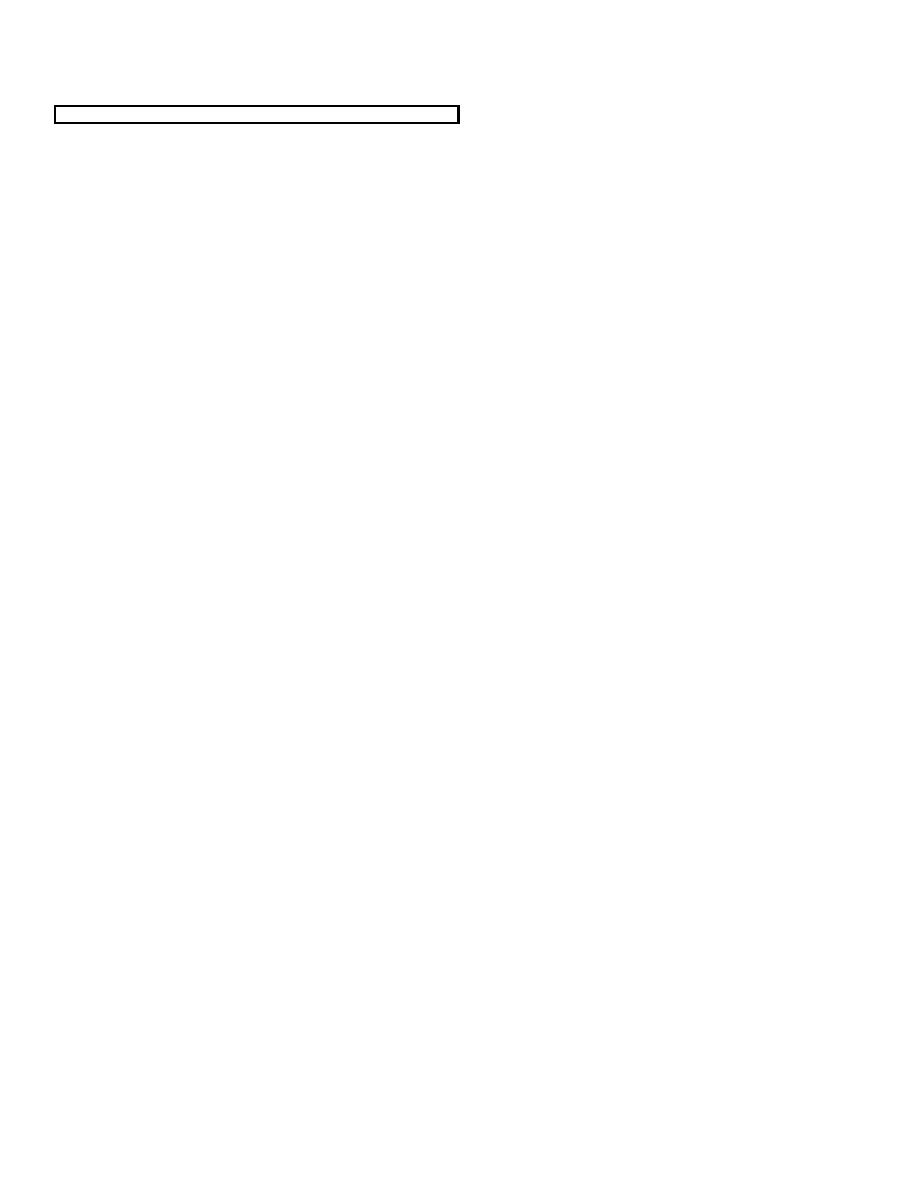 |
|||
|
|
|||
|
Page Title:
GENERAL MAINTENANCE INSTRUCTIONS |
|
||
| ||||||||||
|
|
 TM 9-2320-360-34-2
19-2. GENERAL MAINTENANCE INSTRUCTIONS (CONT)
(7) When possible, replace gaskets, packings, and seals removed during repair work.
Replace lockwire,
lockwashers, and cotter pins at time of reassembly.
(8) Replace broken, worn, or burned electrical wiring.
(9) Replace broken, frayed, crimped, or soft flexible hoses. Replace stripped or damaged fittings. Replace
entire connected flexible hoses if fittings are damaged.
(10) Tag and mark shims, connectors, wires, valves, fittings, and mating ends of lines before disconnecting or
removing. Identify similar parts to ensure correct assembly.
(11) Use hoists, jacks, and other aids when lift ing engine.
b. Follow these inspection instructions when removing and installing engine:
(1) Inspect mounting surfaces and surfaces in contact with gaskets, seals, or machined surfaces. Look for
burrs or scratches which might damage parts or seals upon installation. Remove any defects found.
(2) Remove drain plugs from engine system components and inspect sediment sticking to plug. Grit or fine
metal particles may indicate actual or potential component failure. A few fine particles are normal. This
inspection will help to show defective parts before internal inspection of the components.
(3) Inspect hose surfaces for broken or frayed fabric. Check for breaks caused by sharp kinks or contact with
other parts of the vehicle. Inspect fitting threads for damage. Replace any defective parts. After assembly
and during initial vehicle operation period, check for leaks. Inspect wiring harnesses for chafed or burned
insulation. Inspect terminal connectors for loose connections and broken parts. Visually inspect castings
and weldments for cracks.
Section III. MAINTENANCE PROCEDURES
19-2
|
|
Privacy Statement - Press Release - Copyright Information. - Contact Us |